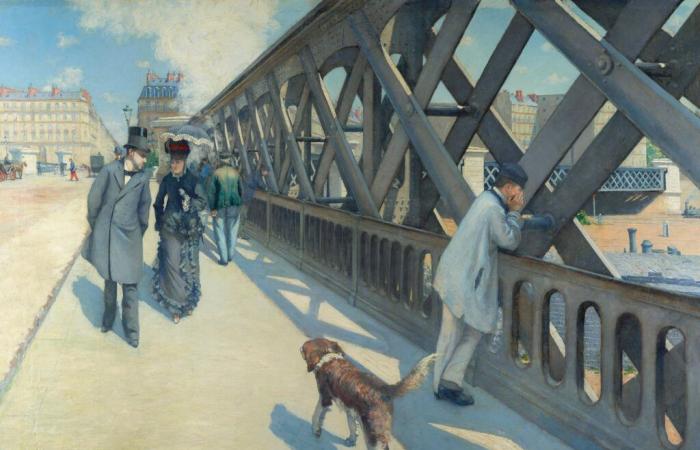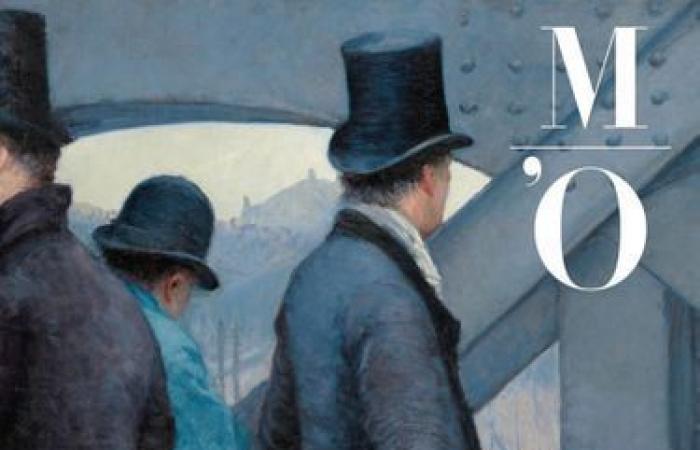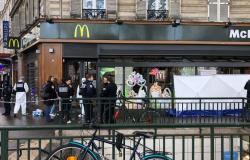He is one of the great names of Impressionism, the author of extremely famous paintings like “Parquet Planers” or “The Bridge of Europe”, demonstrations of pictorial force which allowed him to assert himself in the group – he was one of the youngest. Coming from a bourgeois family, Gustave Caillebotte (1848-1894) was also a patron and unifying support for his artist friends – 38 works from his collection, bequeathed to the State, are also presented in a room at the Musée d’Orsay . Today, the institution approaches its work through an unprecedented approach in an exhibition: the chronicle of the modern world through the representation of the masculine condition.
Chronological and geographical, “Painting Men” illuminates his worlds, from the modern city to the still rural Parisian suburbs, from opulent interiors to outdoor landscapes. The subject dwells little on the evolution of his painting, even if his touch appears thicker and thicker over time, in the energy of the gesture and the contrasts of colors. As Paul Perrin, curator of the exhibition and director of conservation and collections at the Musée d’Orsay, points out: “Caillebotte is first and foremost a creator of images. »
The different versions of the “Bridge of Europe” reveal a new architecture, whose steel beams seem to steal the spotlight from passers-by: bodies are cut and faces turned away. On the top floors of buildings, the balconies offer unique living spaces, and the opportunity for dazzling bird’s-eye views – Caillebotte makes this one of his favorite motifs. Public space is dominated by men, whether rich or poor, alternately absorbed in their thoughts or carried away by the heat of action. All records of the men’s wardrobe are precisely documented, from the frock coat to the worker’s blouse.
“Caillebotte grew up with photography and integrates it into his painting”
Looking at his city views, we think of photographic framing. But, as Paul Perrin explains, “Caillebotte grew up with photography and integrates it into his painting. However, in 1870, the instant photo did not exist, and images inspired by it appeared later. Above all, his works make us feel that we are in the eye of the painter as in the lens of a photographer.”
“Parquet planers” (1875).
© Musée d’Orsay, dist. RMN-Grand Palais / Patrice Schmidt
Indeterminacy is probably what best characterizes his images, whether he shows street scenes in which we do not always know who is observing whom, or whether he makes portraits of men languid on armchairs or busy reading. books. In a letter to a friend, he writes of his contempt for social distinctions. If he shows workers at work, he does not paint the floor planers at the factory, but the sweating skin, kneeling on the floor of his own workshop. Paul Perrin specifies: “Caillebotte shows a lot and hides a lot: the expression of the faces, the relationships between the characters, what they look at outside the frame…”
The rest after this ad
Even in his rare nudes, male or female – the only three he created are presented in the exhibition – Caillebotte’s work is not very erotic. She bears witness to her daily life in her early days – in the family home, with her brothers – and later to her adult life. His companion, Charlotte Berthier, even appears in a few paintings. But he never clearly shows his personal life. “It’s a work that is both voyeuristic and modest,” emphasizes Paul Perrin. Through his paintings, Caillebotte shows the complexities of the human soul, with provocations that he sometimes seems to enjoy. There seems to be a project of freedom in his paintings.
“Caillebotte. Painting Men”, at the Musée d’Orsay, in Paris, until January 19, 2025
© DR







